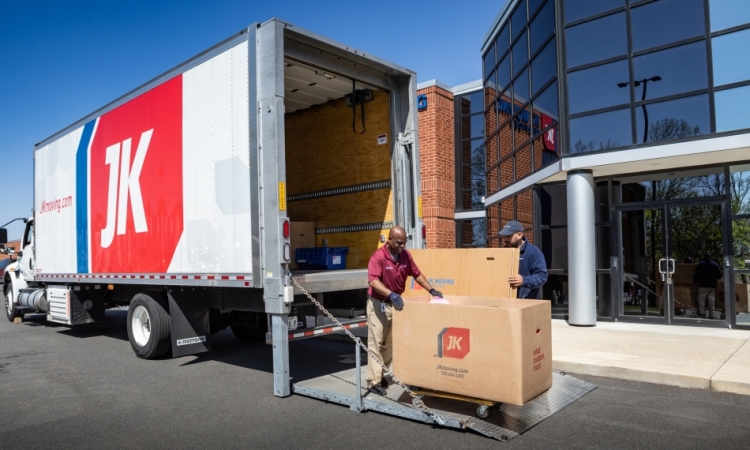New year, new office? Or perhaps a new approach to current office space as back-to-office mandates continue to increase and evolve? A glance at the emerging trends in commercial moving for 2025 reveals a range of possibilities and one clear and notable factor in the approach to workplace flexibility: company size.
What’s happening with RTO in 2025?
Let’s take a direct look at the elephant in the room. As 2024 drew to a close, headline-grabbing announcements of large-scale return-to-office mandates continued to pile up. Top corporations like Amazon, Dell, The Washington Post, and AT&T rolled out strict – and largely unwelcome – five-day in-office schedule requirements. Others, like Disney, JPMorgan, Starbucks, and (ironically) Zoom, implemented increased days in-office, ranging from two to four. In addition, the newly appointed co-leaders of a proposed Department of Government Efficiency (DOGE) in the upcoming Trump administration, Elon Musk and Vivek Ramaswamy, raised the idea of potentially requiring the entire US federal workforce to return to in-person work full-time.
So, the question looms: Is workplace flexibility truly coming to an end? And what will that mean for commercial office space and moving needs?
 According to the Flex Index Q4 Report, structured hybrid models, which are based on set expectations for how much time employees spend in the office are on the rise – now used by 43% of organizations, up significantly from 20% in Q1 of 2023. The main differentiator in how companies approach this issue is size. The report reveals that 70% of companies with fewer than 500 employees offer flexible arrangements, while only 14% of those with 25,000+ employees do so. Fully flexible arrangements are clearly on the decline, and the shift in tone from expectation to requirement is significant. But companies refraining from a five-day mandate are still working to find the right balance between offering flexibility, maintaining productivity, and retaining skilled workers.
According to the Flex Index Q4 Report, structured hybrid models, which are based on set expectations for how much time employees spend in the office are on the rise – now used by 43% of organizations, up significantly from 20% in Q1 of 2023. The main differentiator in how companies approach this issue is size. The report reveals that 70% of companies with fewer than 500 employees offer flexible arrangements, while only 14% of those with 25,000+ employees do so. Fully flexible arrangements are clearly on the decline, and the shift in tone from expectation to requirement is significant. But companies refraining from a five-day mandate are still working to find the right balance between offering flexibility, maintaining productivity, and retaining skilled workers.
Relocation or adaptation
The obvious question that follows these major shifts is how to accommodate returning staff that have been working remotely, on a full- or part-time basis, since COVID shutdowns. For organizations seeking to ramp up their RTO, the options are clear: expand, relocate, or adapt workspaces.
Following Amazon’s dramatic RTO push that was set to begin on January 2, news emerged in late December 2024 that office space limitations forced a delay of the mandate, possibly for months, for workers in several major hubs, including New York, Houston, and Atlanta. AT&T, hoping to avoid the same outcome, says it is “enhancing” its facilities and workspaces. If corporate relocation or large-scale expansion is not the right answer for a company’s needs, the focus can turn to improvement and adaptation.
Options to consider include reconfiguring office layouts or creating flexible spaces rather than moving entire offices; providing easy access to shared resources through technology solutions; offering and building more onsite amenities, such as quiet rooms, childcare, parking, fitness facilities, and cafes; and prioritizing energy-efficient infrastructure and eco-friendly initiatives to reduce environmental impact. For a deeper dive into RTO trends and logistics considerations, read more in our recent blog post.
A year of change
While the RTO debate shows no signs of dying down, looking ahead into this new year shows that neither a complete return to office nor a continuation of generous hybrid work accommodations will win out. Within the US, company size and industry type are the determining factors in workplace flexibility. Office moves, corporate relocation, and the implementation of new technology will all factor into organizations’ choices as they take a comprehensive approach to crafting flexible and satisfying work environments in their current offices or new spaces in 2025


